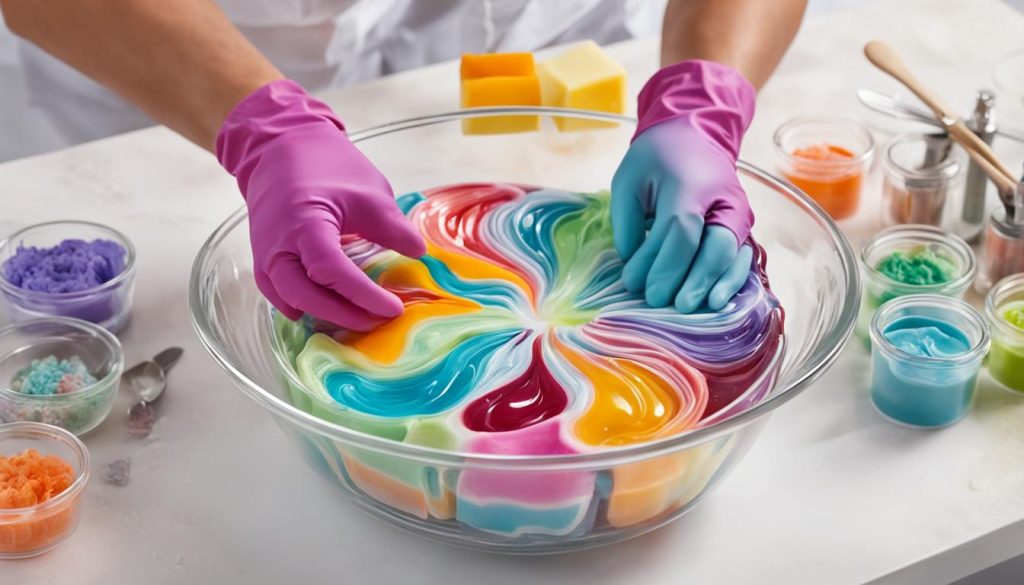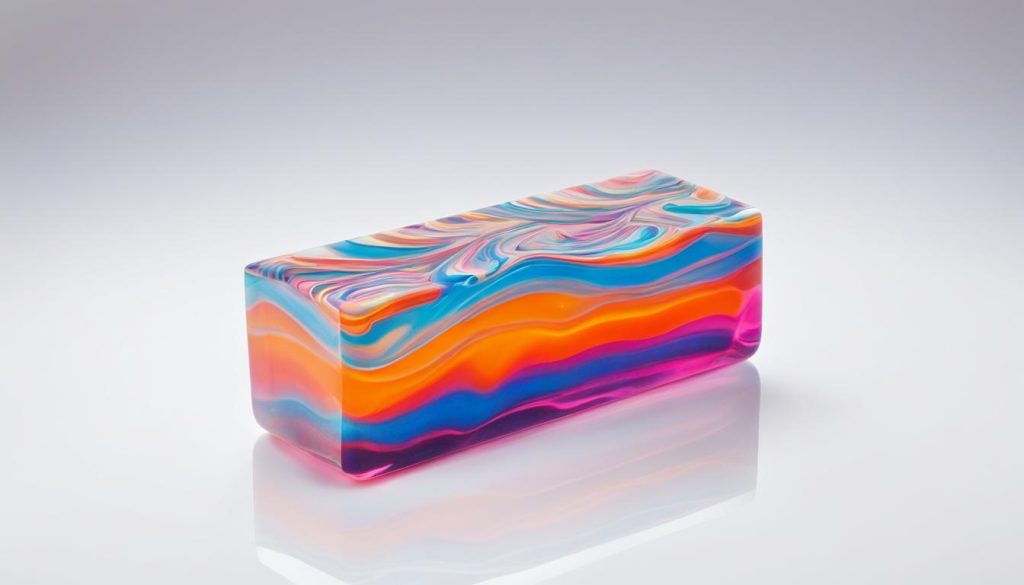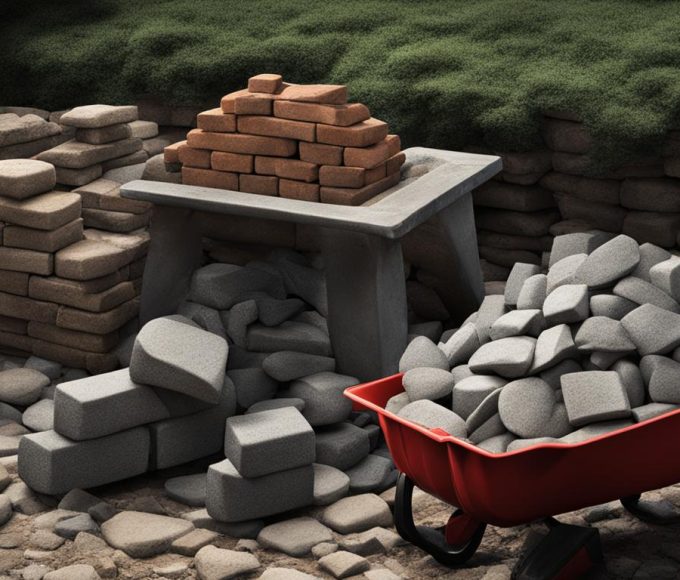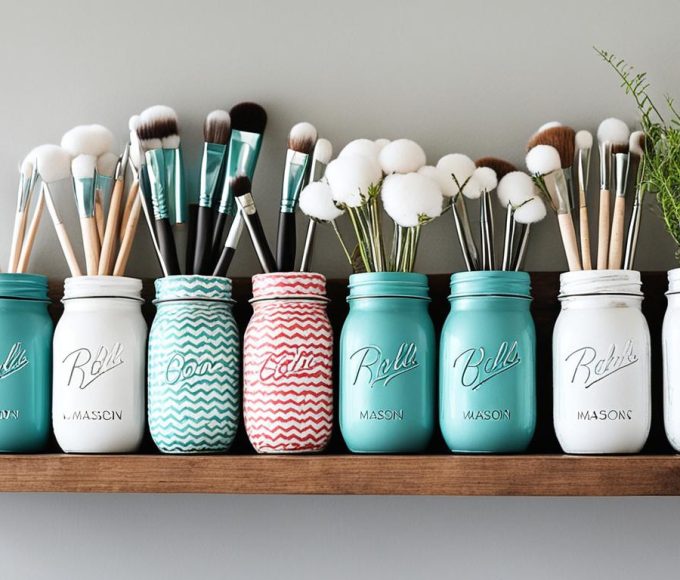Welcome to the enchanting world of handcrafted soaps! Are you ready to embark on an exciting journey of creating your very own natural, organic soap bars? In this guide, we will share with you a wealth of DIY recipes and techniques that will inspire and empower you to make beautiful, all-natural soaps right in the comfort of your own home.
Handmade natural soaps offer a multitude of benefits for your skin and the environment. By making your own soap, you have full control over the ingredients, ensuring that only the finest, gentlest components touch your skin. Say goodbye to commercial soaps filled with harsh chemicals and embrace the art of natural soapmaking!
Whether you are new to soap making or already have experience in this delightful craft, our collection of DIY recipes and techniques will provide you with endless inspiration. From the basics of soap making to the different methods and intricate cold process soap recipes, we have gathered a treasure trove of knowledge to fuel your creativity.
Discover the joy of crafting homemade soap bars that are not only visually stunning but also tailored to your unique preferences. With our step-by-step soap making tutorials and all-natural soap recipes, you’ll soon be an expert in DIY soap making. Get ready to indulge in the therapeutic benefits of this artful practice and unlock your creativity like never before.
So, grab your ingredients, don your apron, and let’s dive into the world of handmade soap techniques, organic soap recipes, and the fascinating process of soap making. Your skin will thank you, and you’ll experience the unmatched satisfaction of using your very own, handcrafted soaps.
The Basics of Soap Making
To make your own homemade soap, also known as cold process soap making, you’ll need a few essential ingredients. These include lye (sodium hydroxide), oil or fat, water, and optional essential oils or fragrances. The chemical reaction between lye and the oils/fats is called saponification, which transforms these ingredients into soap. Understanding the basics of soap making will give you a solid foundation to experiment with different ingredients, tools, and techniques.
When working with lye, it’s crucial to prioritize safety and wear protective gear such as goggles and gloves. Lye is a caustic substance that can cause severe burns and should be handled with caution.
By combining lye with oils or fats and the right amount of water, you initiate the saponification process, which results in the creation of soap. The choice of oil or fat will determine the soap’s characteristics, such as its cleansing properties, lather, and moisturizing ability. Different oils and fats can be used, including olive oil, coconut oil, shea butter, and more.
To add a pleasing scent to your soap, you can incorporate essential oils or fragrance oils. These come in a wide variety of scents, allowing you to personalize your soap according to your preferences.
With the basic understanding of soap making ingredients and the importance of protective gear, you can now start experimenting with different homemade soap recipes, exploring various oils, fats, scents, and textures. The possibilities are endless, and you’ll soon discover the joy and satisfaction of creating your own unique handmade soaps.
Different Methods of Soap Making

When it comes to soap making, there are various methods you can explore, each offering unique advantages and techniques. Let’s take a closer look at some of the most popular methods:
Cold Process Soap
The cold process soap method involves mixing oils/fats with lye, also known as sodium hydroxide. This chemical reaction, called saponification, occurs naturally and transforms the ingredients into soap. After mixing, the soap is poured into molds and left to cure for several weeks. This curing process allows the soap to harden and become gentle on the skin. Cold process soapmaking provides ample opportunities for customization, as you can experiment with different oils, scents, colors, and additives.
Hot Process Soap
Hot process soapmaking shares similarities with the cold process method, but with an added cooking step. After completing the saponification process, the soap mixture is heated to speed up the curing process. This results in a faster cure time compared to cold process soap. Hot process soap can be a great option if you’re looking for quicker results or prefer a rustic, textured appearance.
Melt and Pour Soap
Melt and pour soap is an ideal method for beginners or those who prefer a simplified approach. With this technique, you melt pre-made soap bases, which are typically glycerin-based, and add your choice of scents, colors, and additives. Once the customized mixture is poured into molds, it solidifies quickly. Melt and pour soap allows for endless creativity and the ability to produce beautifully crafted soaps without handling lye.
Liquid Soapmaking
Liquid soapmaking involves creating soap in liquid form instead of solid bars. The process typically includes using potassium hydroxide in addition to oils, resulting in a soap that is suitable for handwashing and other liquid soap applications. Liquid soapmaking allows for customization in terms of scents, colors, and viscosity.
Rebatching
Rebatching, also known as hand-milling, is the process of melting down store-bought or previously made soap and adding new ingredients. This method is perfect for salvaging soap scraps or creating unique blends. With rebatching, you can combine different soap bases, colors, scents, and additives to create one-of-a-kind soaps.
Each of these soap making methods offers its own set of advantages and techniques. By exploring various methods, you can unleash your creativity and produce soaps that suit your preferences and needs.
Cold Process Soap Recipes
Cold process soap recipes are a fantastic way to create customized and nourishing handmade soaps. With complete control over ingredients and customization options, you can produce delightful bars that are not only beautiful but also beneficial for your skin. By incorporating natural additives such as botanical extracts, essential oils, and herbs, you can enhance the scent and texture of your soaps.
Some popular cold process soap recipes include:
- Herbal Eucalyptus Soap: A refreshing and invigorating soap that leaves you feeling revitalized.
- Wildflower Soap: Embrace the beauty of nature with the captivating scents of various wildflowers.
- Lemon Balm Soap: Citrusy and soothing, this soap is perfect for uplifting your spirits.
- Sea Sponge Soap Bars: These exfoliating bars provide a gentle scrub while immersing you in a beach-like experience.
- Rosemary and Peppermint Energizing Soap: Awaken your senses with the stimulating blend of rosemary and peppermint.
- Lemongrass, Ginger, and Coffee Kitchen Soap: An invigorating combination that helps eliminate stubborn kitchen odors.
- Orange Vanilla Cinnamon Soap: A warm and comforting soap with a delightful aroma.
These recipes combine nourishing oils and fats with natural ingredients, resulting in exquisite botanical soaps. Elevate your bathing experience with these scented soap bars.
Melt and Pour Soap Recipes

If you’re a beginner looking for a quick and easy way to make your own decorative soaps, then melt and pour soap recipes are perfect for you. This beginner-friendly method allows you to create beautiful and fragrant soaps without the need for handling lye. With pre-made soap bases, you can customize your creations with scents, colors, and add-ins like flowers or exfoliants.
One popular melt and pour soap recipe is the lavender ombre soap. This recipe combines layers of different shades of purple, creating a visually stunning soap bar. Another delightful option is the rosemary lemon soap-on-a-rope, which combines the invigorating scents of rosemary and lemon for a refreshing bathing experience.
If you’re looking for something truly exquisite, try making the exquisite botanical soap. This recipe incorporates dried flowers and botanicals into the soap, resulting in a visually stunning and aromatic soap bar. For a gentle exfoliating soap, the lavender oatmeal soap cupcakes are a must-try. The combination of soothing lavender and exfoliating oatmeal creates a luxurious bathing experience.
For a unique and visually appealing soap, consider making the homemade honeycomb soap. This recipe replicates the look of a honeycomb, complete with a sweet honey scent. If you’re a fan of cherry blossoms, the sakura cherry blossom soap will captivate your senses with its delicate floral fragrance.
For those looking for an unconventional soap design, the amber fossilized bug soap is a fascinating choice. This recipe embeds fossilized insects into the soap, creating an intriguing and eye-catching soap bar. These melt and pour soap recipes offer a range of options for creating beautiful and scented soaps that are sure to impress.
The Beauty of Glycerin Soap
One of the main advantages of melt and pour soap recipes is the use of glycerin soap bases. Glycerin is a natural humectant, which means it attracts and retains moisture. This makes glycerin soap incredibly moisturizing for your skin, leaving it feeling soft and hydrated.
Another benefit of glycerin soap is its transparency. The soap base itself is clear, allowing you to create stunning translucent designs and embedments. Whether you want to make a colorful soap with embedded flowers or a soap with suspended exfoliants, glycerin soap allows for endless possibilities.
The image above showcases the beauty of glycerin soap. Its transparent nature allows for visually appealing and decorative soap creations.
With melt and pour soap recipes, you can unleash your creativity and make personalized soaps that are both beautiful and beneficial for your skin.
Benefits of Handmade Soap
Handmade soaps offer numerous benefits for your skin. They are made from plant-based oils and butters that are rich in nutrients, vitamins, and antioxidants. These natural ingredients provide nourishment and hydration to your skin.
One of the key advantages of handmade soap is that it contains glycerin, a moisturizer that is naturally produced during the soapmaking process. Glycerin helps to lock in moisture, leaving your skin feeling soft, smooth, and supple.
In addition to plant-based oils and glycerin, handmade soaps can be enhanced with botanical extracts and essential oils. These additives provide additional benefits for your skin, depending on their properties. For example, lavender extract has soothing and calming effects, while tea tree oil possesses antibacterial properties.
Using handmade soap allows you to embrace the healing properties of natural ingredients in your daily skincare routine. Unlike commercial soaps that may contain harsh chemicals and synthetic fragrances, handmade soaps are free from artificial additives, making them suitable for sensitive skin as well.
By opting for natural ingredients, botanical extracts, and plant-based oils, you can experience the moisturizing and nourishing benefits that handmade soaps offer. Treat your skin to the goodness of nature with every wash.
Getting Started with Soap Making
If you’re new to soap making, it’s important to educate yourself on the techniques, safety precautions, and resources available. There are plenty of soap making tutorials, both online and in books, that provide step-by-step instructions. Ensure you have the necessary equipment, such as a stainless steel pan, molds, and measuring tools. Familiarize yourself with the safety guidelines and wear protective gear when working with lye. Exploring soap making communities and resources can also provide valuable insights and inspiration for your soap making journey.
Soap Making Tutorials
When starting your soap making journey, it’s helpful to follow tutorials that provide clear instructions and guidance. Online platforms like YouTube and blogs offer a wealth of soap making tutorials, where experienced soap makers share their techniques and tips. Additionally, there are books dedicated to soap making that provide detailed tutorials and inspiration for creating various soap recipes. These tutorials will help you understand the process and gain confidence as you experiment with different soap making techniques.
Soap Making Resources
Alongside tutorials, there are various soap making resources available that can enhance your learning experience. Online communities, forums, and social media groups provide spaces for soap makers to connect, share ideas, and seek advice. These communities are excellent sources of inspiration, troubleshooting tips, and recommendations for suppliers of high-quality ingredients and equipment. Exploring these resources will expand your knowledge and help you navigate your soap making journey with confidence.
Soap Making Safety
When working with lye, a key ingredient in soap making, safety should be your top priority. Lye is a caustic substance that can cause burns if mishandled. To ensure your safety, it’s essential to wear protective gear, including goggles, gloves, and a long-sleeved apron. Additionally, make sure to work in a well-ventilated area and keep children and pets away from your soap making workspace. By following proper safety precautions, you can enjoy the process of soap making without any harm.
Soap Making Equipment
Having the right equipment is crucial for successful soap making. Some essential equipment includes a stainless steel pan or pot for mixing ingredients, molds for shaping your soap bars, and accurate measuring tools to ensure precise measurements. Depending on the soap making method you choose, additional equipment may be required, such as a thermometer for checking temperatures or a stick blender for emulsifying ingredients. Investing in high-quality soap making equipment will contribute to the quality and consistency of your handmade soaps.
Soap Making Books
If you prefer a more comprehensive and in-depth learning experience, consider exploring soap making books. These books provide detailed information on various soap making techniques, recipes, and troubleshooting tips. Some popular soap making books include “The Natural Soap Making Book for Beginners” by Kelly Cable, “Soap Crafting” by Anne-Marie Faiola, and “The Soapmaker’s Companion” by Susan Miller Cavitch. These resources will serve as valuable references as you dive deeper into the art of soap making.
Exploring the Art of Soap Making
Soap making offers not only a practical skill but also a creative outlet. It can be a therapeutic and enjoyable hobby that allows you to express your creativity while making personalized gifts for loved ones. The art of soap making involves experimenting with ingredients, colors, scents, and designs to create unique and beautiful soap bars.
When you engage in soap making as a hobby, you have the opportunity to unleash your imagination and try out various creative techniques. You can mix and match different oils, herbs, and botanicals to achieve stunning visual effects and captivating aromas. Whether you prefer vibrant colors and bold fragrances or subtle tones and delicate scents, there are endless possibilities to explore.
Personalized soap gifts make heartfelt presents for birthdays, anniversaries, holidays, or simply to show someone you care. You can tailor the soap bars to the recipient’s preferences, incorporating their favorite scents, colors, or even embedding small objects like flower petals or personal messages. Each personalized soap gift becomes a unique token of your affection and thoughtfulness.
Moreover, soap making has therapeutic benefits that go beyond the mere act of creating an artistic product. The process of making soap allows you to disconnect from the hustle and bustle of everyday life and immerse yourself in a calming and meditative activity. As you mix and pour the ingredients, you can experience a sense of relaxation and focus, nurturing your well-being.
Engaging in soap making enables you to connect with the natural world and appreciate its beauty, simplicity, and purity. By using natural ingredients and avoiding harsh chemicals, you create a product that is not only good for your skin but also environmentally friendly. With each batch of soap you craft, you contribute to a sustainable and eco-conscious lifestyle.
Embarking on your soap making journey opens up a world of creativity, self-expression, and endless possibilities. The combination of artistic exploration, personalized gifts, and therapeutic benefits makes soap making a fulfilling and enjoyable hobby. So why not dive into the enchanting world of soap making and experience the joy and satisfaction it can bring?
Conclusion
Handmade soap making is a rewarding and fulfilling craft that offers a range of benefits for both you as the maker and the user. By creating your own organic, all-natural soap, you can prioritize the health of your skin and the environment. With a variety of recipes and techniques at your disposal, you have the opportunity to explore the art of soap making and develop your own unique soap creations.
Whether you’re a beginner just starting out or an experienced soap maker, the possibilities are endless. The satisfaction of using your own handmade soap is truly unmatched, knowing that it was crafted with care and tailored to your preferences. The process of making soap can also be a form of self-expression and relaxation, providing you with a creative outlet and therapeutic benefits.
So why wait? Start your soap making journey today and experience the joy of creating personalized soap bars that nourish your skin and bring delight to your daily routine. Discover the inspiration that comes from connecting with natural ingredients and exploring your creative potential. Handmade soap making opens up a world of possibilities, allowing you to indulge in the goodness of nature and experience the many benefits of using soap that you made with your own hands.







